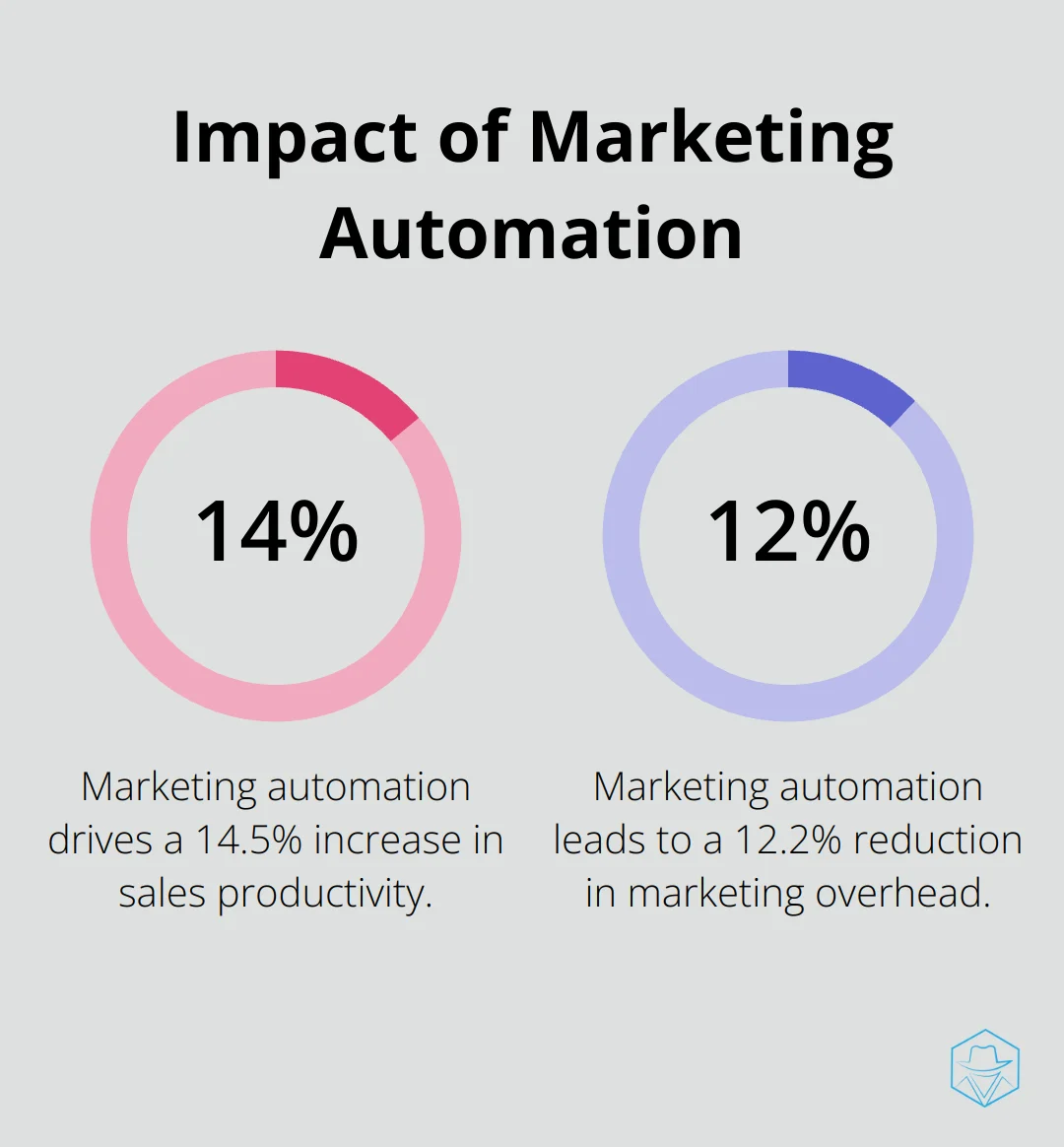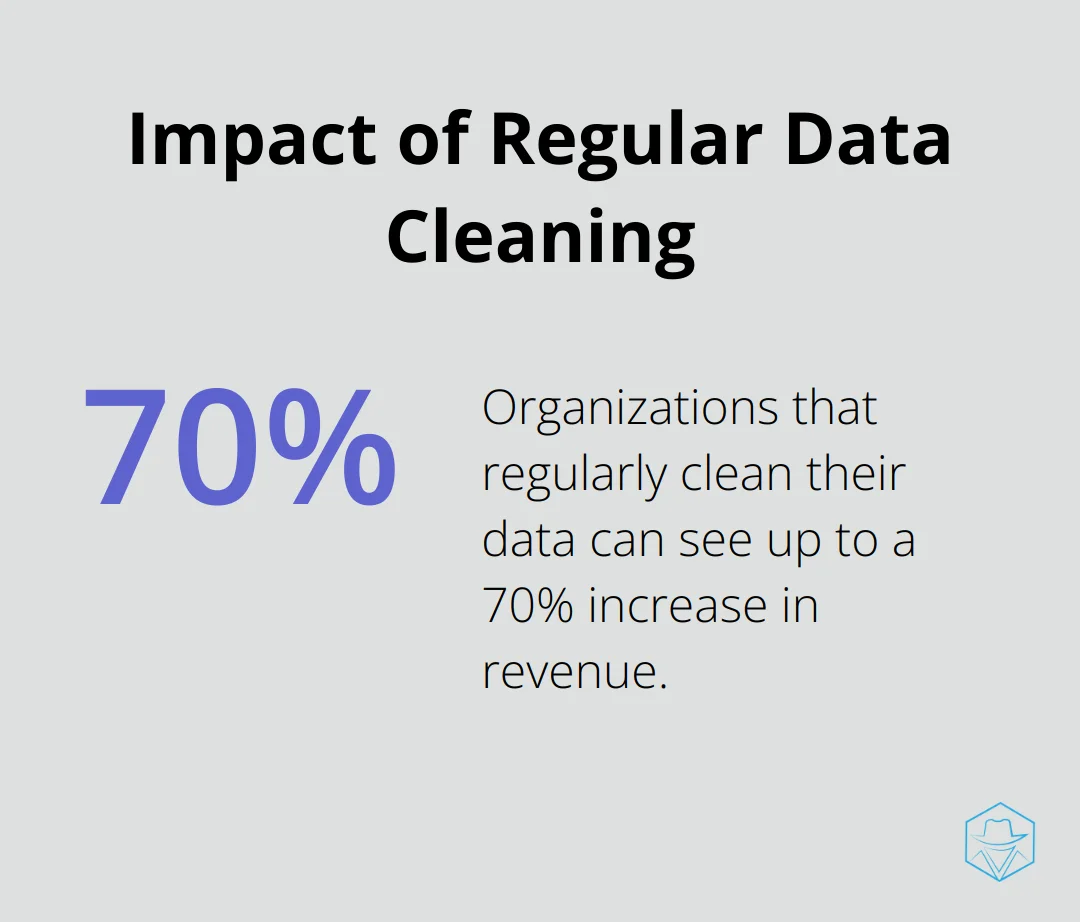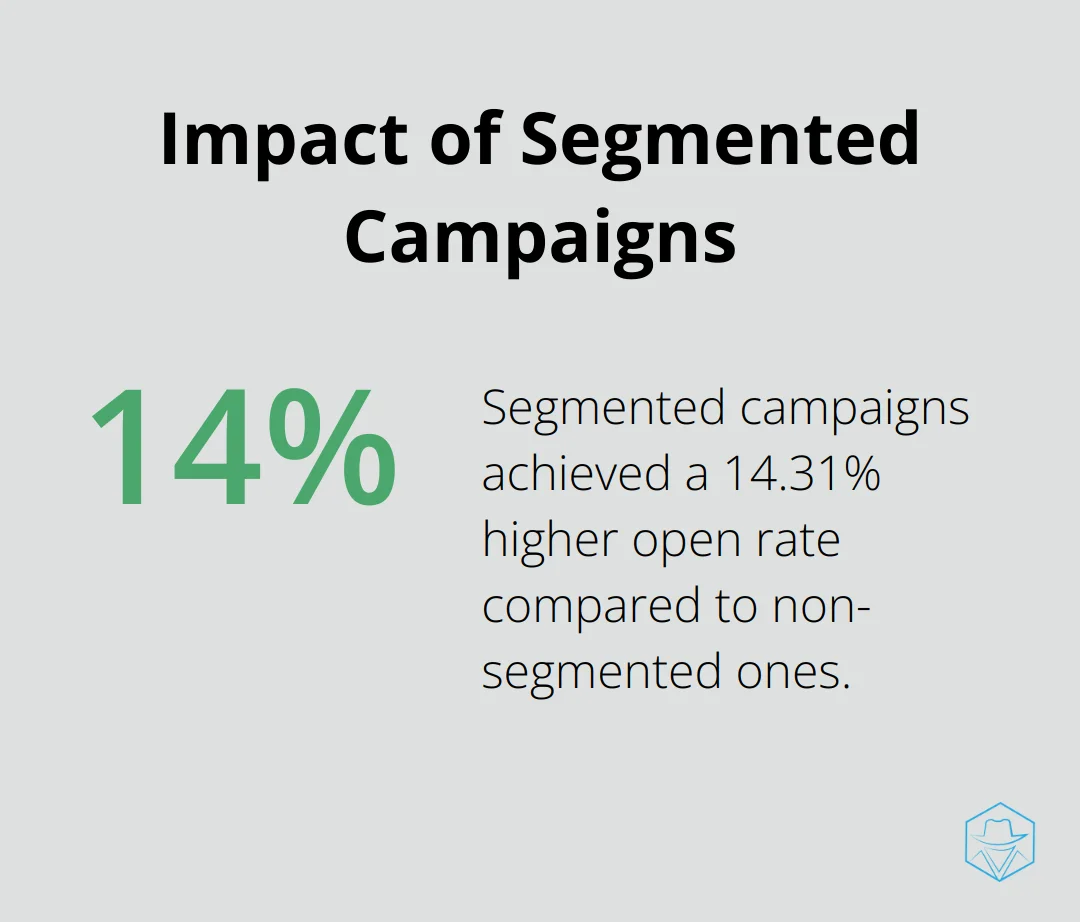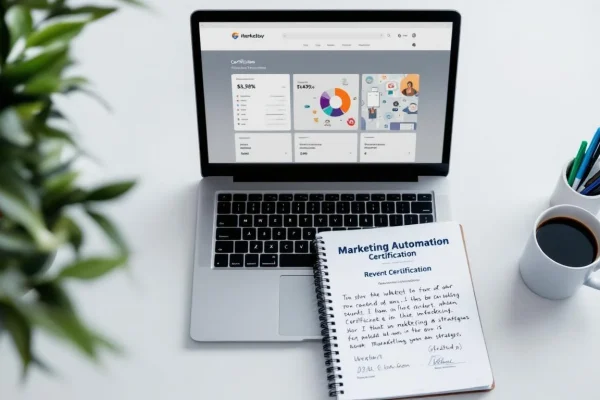Implementing Marketing Automation: Best Practices

At Drop Cowboy, we’ve seen firsthand how implementing marketing automation can transform businesses. It’s a game-changer that streamlines processes, boosts efficiency, and drives growth.
But we also know that getting started with marketing automation can be daunting. That’s why we’ve put together this guide to help you navigate the implementation process and maximize your results.
What Is Marketing Automation?
The Essence of Marketing Automation
Marketing automation revolutionizes customer interactions for businesses. It uses software to automate repetitive marketing tasks, including email campaigns, social media posting, and lead nurturing processes.
Core Components of Marketing Automation
The foundation of marketing automation lies in its ability to streamline workflows. Businesses transform their operations by automating tasks like lead scoring, customer segmentation, and personalized messaging. These components create a cohesive marketing strategy that operates round the clock.
Data collection and analysis form a key aspect. Marketing automation platforms gather valuable information about customer behavior, preferences, and interactions. This data powers personalized campaigns and helps businesses make informed decisions.
Benefits for Businesses of All Sizes
Marketing automation offers substantial benefits, regardless of company size. Small businesses can compete with larger corporations by automating their marketing efforts. Larger enterprises can scale their operations efficiently, reaching more customers without a proportional increase in workforce.
A study by Nucleus Research found that marketing automation drives a 14.5% increase in sales productivity and a 12.2% reduction in marketing overhead. These numbers highlight the tangible impact automation can have on a company’s bottom line.

Dispelling Common Automation Myths
Myth 1: Automation is Impersonal
Contrary to popular belief, marketing automation enables hyper-personalization at scale. By leveraging customer data, businesses can create tailored experiences that resonate with individual preferences.
Myth 2: Automation is Only for Tech-Savvy Companies
Modern platforms are increasingly user-friendly, making automation accessible to businesses of all technical levels. Companies with minimal technical expertise (including many of our clients) successfully implement and benefit from marketing automation tools.
Myth 3: Automation Replaces Human Marketers
This couldn’t be further from the truth. Automation frees up time for marketers to focus on strategy and creativity, enhancing rather than replacing human input.
As we move forward, it’s important to understand how to implement marketing automation effectively. The next section will guide you through the key steps to successfully integrate this powerful tool into your business strategy.
How to Implement Marketing Automation
Set Clear, Measurable Goals
The first step in implementing marketing automation requires you to define your objectives. Do you want to increase lead generation, improve customer retention, or boost sales conversions? Make your goals specific and measurable. Try to increase qualified leads by 25% within six months or reduce customer churn by 15% over the next year.
Choose the Right Platform
Selecting an automation platform that aligns with your business needs is essential. Consider factors such as ease of use, scalability, integration capabilities, and cost. The market offers various options (including platforms like Drop Cowboy, which combines ringless voicemail, SMS, and AI-powered voice cloning for personalized communication).
Develop a Comprehensive Implementation Plan
Create a detailed roadmap for your automation rollout. This plan should include timelines, resource allocation, and specific milestones. Start with a pilot program that focuses on one or two key processes, such as lead nurturing or customer onboarding. This approach allows you to address any issues before a full-scale implementation.
Prepare Your Data
Data fuels effective marketing automation. Conduct a thorough audit of your existing customer data. Ensure it’s clean, up-to-date, and properly segmented. Organizations that regularly clean their data can see up to a 70% increase in revenue (according to a study by Validity).

Train Your Team
Invest in comprehensive training for your team. This involves more than teaching them how to use new tools; it’s about helping them understand the strategic value of automation. Create a culture of continuous learning and improvement. Companies that prioritize employee training see 24% higher profit margins compared to those that don’t (as reported by the Association for Talent Development).
Implementing marketing automation is an ongoing process of refinement and optimization. As you progress, track your performance against your initial goals and adjust your strategies as needed. The next section will explore best practices to maximize the effectiveness of your marketing automation efforts.
How to Maximize Your Marketing Automation Success
At Drop Cowboy, we’ve observed numerous businesses transform their marketing efforts through automation. Success, however, requires strategic thinking and consistent effort. Here are the key practices that set top performers apart.
Segment Your Audience Effectively
Effective segmentation forms the foundation of successful marketing automation. Look beyond basic demographics. Analyze behavior patterns, purchase history, and engagement levels. A Mailchimp study revealed that segmented campaigns achieved a 14.31% higher open rate compared to non-segmented ones.

Create micro-segments based on specific actions or interests. For instance, segment customers who abandoned their cart in the last 24 hours, or those who viewed a particular product page multiple times. This granularity allows for hyper-targeted messaging that resonates with each individual.
Create Compelling Content
Your automated messages must stand out. Personalization is essential, but it extends beyond using a customer’s name. Implement dynamic content that adapts based on the recipient’s preferences or behavior. Epsilon reports that 80% of consumers are more likely to purchase when brands offer personalized experiences.
Prioritize value-driven content. Instead of solely promoting products, provide useful information that solves your audience’s problems. This approach builds trust and establishes your brand as an authority in your field.
Design Effective Workflows
Your automated workflows should mirror the customer journey. Map out each touchpoint a customer has with your brand. Then, create workflows that nurture leads at each stage of this journey.
Start with simple workflows and gradually increase complexity as you learn what works for your audience. A basic welcome series for new subscribers can boost long-term engagement by 33% (according to Invesp).
Include triggers for re-engagement. Set up a workflow that targets customers who haven’t made a purchase in the last 90 days with a special offer.
Integrate Your Systems
Your marketing automation platform shouldn’t operate in isolation. Integrate it with your CRM, e-commerce platform, and other business systems. This integration creates a unified view of your customers and enables more sophisticated automation.
For example, integrating your e-commerce platform with your marketing automation tool allows you to trigger personalized follow-up emails based on specific purchase behaviors. This level of integration can lead to a 20% increase in sales opportunities (as reported by Nucleus Research).
Optimize Through Testing
The work doesn’t end once you’ve set up your automation. Continuous testing and optimization are vital. A/B test various elements, from email subject lines to message timing. Even small improvements can yield significant results over time.
Monitor your key performance indicators (KPIs) closely. Look beyond open rates and click-through rates. Focus on metrics that directly impact your bottom line, such as conversion rates and customer lifetime value.
Try new approaches. The marketing landscape evolves constantly, and yesterday’s effective strategies might not work tomorrow. Stay agile and adapt your strategies based on your results and changing market conditions.
Final Thoughts
Implementing marketing automation transforms businesses in today’s competitive landscape. We at Drop Cowboy have witnessed firsthand how automation streamlines processes, boosts efficiency, and drives growth. Success requires clear goals, the right platform, and a comprehensive plan that includes data preparation and team training.
Effective audience segmentation, compelling content creation, and well-designed workflows maximize automation efforts. Continuous testing and optimization prove essential as the marketing landscape evolves. Businesses must stay agile and experiment with new approaches to maintain a competitive edge.
Our Drop Cowboy platform offers innovative features to help businesses create personalized, engaging campaigns at scale. We encourage you to explore marketing automation or enhance your current strategies. The potential for increased efficiency, better customer engagement, and improved ROI awaits those who take action.
blog-dropcowboy-com
Related posts

August 4, 2025
Why does a phone go straight to voicemail
Learn why a phone goes straight to voicemail with insights on network issues, busy schedules, Do Not Disturb mode, and find practical solutions.

March 1, 2025
Text Marketing Examples That Drive Results
Explore text marketing examples that boost engagement and deliver results with proven strategies for increasing conversions effectively.

July 20, 2025
Top Marketing Automation Certifications to Consider
Explore top certifications and best practices in marketing automation to boost your skills and stay ahead in the competitive marketing landscape.

April 14, 2025
Email Hosting Solutions for Shopify: What You Need to Know
Explore the best email hosting Shopify options to boost communication, streamline operations, and enhance customer engagement for your online store.

August 5, 2025
Why when i call someone it goes straight to voicemail
Explore why calls go straight to voicemail. Uncover common reasons and solutions for dropped calls to improve your communication.

August 4, 2025
Phone straight to voicemail
Explore why calls go phone straight to voicemail and discover strategies to optimize communication efficiency easily.